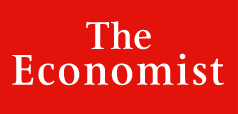每日外闻4

What it takes to be a CEO in the 2020s
On paper this is a gold age for bosses. Chief executives have vast power. The people who run America’s largest listed firms (上市公司) hold swag (统治) over 26m (百万缩写) staff. Profits are high and the economy is purring (发出咕噜声,表示经济在发展). The pay is fantastic: the median of those CEOs pockets $13m a year. The risks are tolerable: your chances of being fired or retiring in any year are about 10%. CEOs often get away with a dreadful (糟糕的) performance. The only big drawback is all those meetings, which eat up two-thirds of the typical boss’s working hours.
CEO say the job has got harder under the situation that competition is more intense. But they have been saying that for years. In fact the evidence suggests that, as America’s economy has become more sclerotic (固化的), big firms have been able to count on (依靠) cranking out (制造出) high profits for longer.
Studies suggest that the quality of an American firm’s leadership explains about 15% of the variance in profitability. But boards (董事会) and headhunters struggle to (很难) identify who will do a good job. About 80% of CEOs come from within the company and over half are engineers or have MBAS. Most are white and male, although that is changing slowly.
This tiny elite faces big changes, starting with how they control their firms. The main tool that CEOs have wielded (行使) is the control of physical investment (实物投资), a process known as capital allocation. The firm and the CEO have had clear jurisdiction (管辖权) over a defined set of assets, staff, products and proprietary information (专有资料).
Today, however, 32% of firms in the s&p 500 (标普500) of big American firms invest more in intangible assets (无形资产) than physical ones (有形资产), and 61% of the market value of the s&p 500 sits in intangibles such as research and development (r&d) (研发), customers linked by network effects, brands and data.
Meanwhile the boundaries of the firm, and the CEO’s authority, are blurring. Generations of bosses have obeyed the call to “go global”(走出去). But in the past decade the profitability of multinational investment abroad has soured (酸的,令人失望的), so that returns on capital (资本回报率) are a puny (微小的) 7%.
The last change is over the purpose of the firm. Politicians call on CEOs to favour staff, suppliers and clients interests more. In a dynamic economy some firms have to shrink (缩减规模) and shed workers (裁员). It is silly to pretend there are no trade-offs. Higher wages and more cash for suppliers mean lower profits or higher prices for consumers.
The very model of (模型,典范) a modern CEO
What, then, does it take to be a corporate leader in the 2020s?
那么,要成为2020年代的企业领导者又需要做什么?
Mastering the tricky, creative and more collaborative game of allocating intangible capital is essential. A CEO must be able to marshal (排列,整理) the data flowing between companies and their counterparts, redistributing (重新分配) who earns profits and bears risk. Last, bosses need to be clear that a firm should be run in the long-term interest of its owners. That does not mean being crusty (执拗的) or myopic (近视,目光短浅的).
corruption scandal: 腐败丑闻
See you tomorrow





